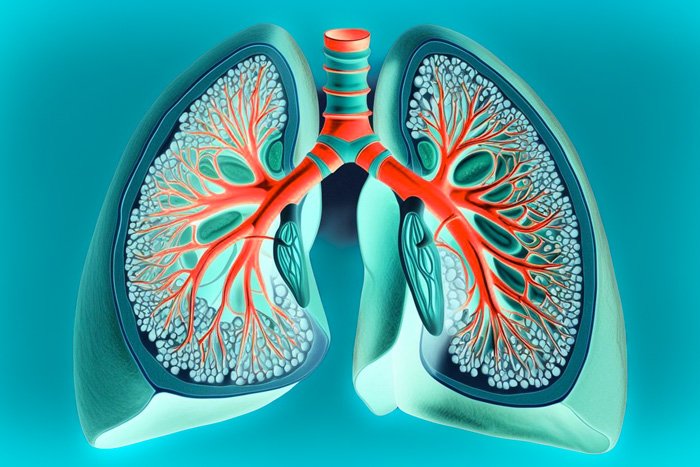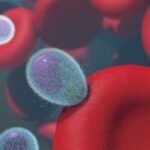Introduction
Purifying your lungs with effective lung detox practices is essential for maintaining overall well-being. Constant exposure to pollution, smoking, and harmful toxins poses significant challenges to respiratory health. While the body naturally cleanses the lungs, adopting specialized lung detox practices can accelerate purification and enhance long-term lung function. Explore practical tips, scientific insights, and advanced methods to protect and detoxify your lungs effectively.
The Science Behind Lung Detoxification
The lungs play a critical role in oxygenating the body and filtering out harmful particles. However, exposure to pollutants and toxins can damage lung cells, leading to oxidative stress and even chronic conditions like COPD (Chronic Obstructive Pulmonary Disease). Understanding the cellular impact of pollutants helps us appreciate the importance of lung care and detoxification. Emerging research also highlights the role of the lung microbiome, a delicate ecosystem that influences immunity and respiratory function. A healthy diet and lifestyle can maintain this microbiome, further supporting lung health.
Avoiding Pollution for Healthier Lungs
Reducing your exposure to pollution is one of the most effective ways to protect your lungs. Here are practical tips:
- Stay Indoors on High Pollution Days: Monitor air quality indexes (AQI) through weather apps or government resources and limit outdoor activities when pollution levels are high.
- Use an Air Purifier: Invest in a high-quality air purifier for your home, especially if you live in urban or industrial areas.
- Avoid Smoking and Secondhand Smoke: Cigarette smoke is a major source of indoor air pollution and should be avoided at all costs.
- Choose Cleaner Travel Options: Whenever possible, opt for public transport, cycling, or walking to reduce your personal contribution to air pollution.
- Create Green Spaces: Planting trees and adding greenery around your living area can help improve air quality.
Managing Pollen Exposure for Lung Health
Pollen, a fine powder produced by plants, can trigger allergies and exacerbate respiratory conditions like asthma. Taking proactive steps to minimize exposure can protect lung health, particularly during peak pollen seasons.
Tips for Managing Pollen Exposure:
- Monitor Pollen Levels: Keep an eye on daily pollen counts using weather apps or local news updates. Try to stay indoors when counts are high, especially during the early morning when pollen dispersal is at its peak.
- Close Windows and Use Air Conditioning: Keep windows and doors closed to prevent pollen from entering your home. Use an air conditioner with a clean filter to maintain good air quality indoors.
- Wear a Mask Outdoors: If you need to go outside on high-pollen days, wearing a mask designed for allergies (such as an N95 mask) can reduce inhalation of pollen.
- Shower and Change Clothes: After spending time outdoors, take a shower and change clothes to remove pollen particles that may cling to your skin, hair, or clothing.
- Use an Air Purifier: An air purifier equipped with a HEPA filter can help trap pollen and improve indoor air quality.
- Dry Laundry Indoors: Avoid drying clothes or bedding outdoors during pollen-heavy seasons, as pollen can stick to fabrics.
The Link Between Pollen and Respiratory Issues For individuals with pollen allergies, inhaling these tiny particles can lead to symptoms like coughing, wheezing, or shortness of breath. These reactions can strain the lungs and worsen pre-existing conditions, making preventive measures essential.
Exercising Safely in Urban Environments
While aerobic exercise is essential for enhancing lung capacity and overall health, doing it in high-pollution areas, such as cities or near heavy traffic, can expose your lungs to harmful air pollutants.
The Risks:
- Pollutant Exposure: Intense exercise increases your breathing rate, causing you to inhale more pollutants like particulate matter, carbon monoxide, and nitrogen dioxide.
- Lung Irritation: Prolonged exposure to polluted air while exercising can irritate your respiratory system, potentially leading to coughing, wheezing, or exacerbated asthma symptoms.
Safety Tips for Urban Workouts:
- Monitor Air Quality: Check air quality indexes (AQI) using weather apps. Avoid outdoor workouts when AQI levels are poor or moderate.
- Choose Parks or Green Spaces: Opt for exercising in parks, away from traffic and industrial zones, where air is cleaner.
- Time Your Workouts: Exercise early in the morning or late in the evening when traffic and pollution levels are lower.
- Consider Indoor Options: On high-pollution days, switch to indoor workouts using air purifiers for a safer environment.
- Avoid Heavy Breathing Near Traffic: If jogging in urban areas, reduce intensity when passing traffic-heavy zones to minimize pollutant inhalation.
- Hydrate Well: Staying hydrated helps your body naturally detoxify and supports mucociliary clearance.
By taking these precautions, you can balance the benefits of exercise with the need to protect your lungs from pollution-related harm.
The Role of Steam Therapy Devices in Lung Health
Steam therapy devices provide warm, moist air that can help soothe respiratory discomfort and support overall lung health.
Benefits of Steam Therapy Devices:
- Relief from Congestion: Warm steam can loosen mucus, providing relief for nasal and chest congestion caused by colds, allergies, or sinusitis.
- Soothing Airways: Steam reduces irritation in the throat and airways, easing breathing for individuals with respiratory issues like asthma or bronchitis.
- Aromatherapy Integration: Many devices support essential oils, like eucalyptus or peppermint, which offer added anti-inflammatory and relaxing benefits.
Types of Steam Therapy Devices:
- Portable Steam Inhalers: Compact, lightweight devices that are ideal for quick and convenient use. [View on Amazon]
- Tabletop Steam Inhalers: Provide a steady steam output with adjustable settings for home use. [View on Amazon]
- Multifunctional Steamers: Some models double as facial steamers or humidifiers, offering versatility and added value. [View on Amazon]
Tips for Safe Use:
- Follow the manufacturer’s instructions to avoid burns or injuries.
- Ensure the steam temperature is warm but not scalding.
- Supervise children when using these devices.
- Consult a healthcare professional if steam therapy is used alongside medical conditions.
Steam therapy is a simple, natural way to ease breathing and support lung health, making it a valuable addition to your respiratory care routine.
Best Practices for Lung Purification
- Quit Smoking: Smoking introduces harmful chemicals into the lungs, compromising their function. Quitting smoking offers immediate and long-term benefits.
- Improve Air Quality: Reduce indoor pollution by using air purifiers, avoiding synthetic fragrances, and ensuring proper ventilation.
- Regular Exercise: Aerobic activities, such as jogging or swimming, enhance lung capacity and overall strength.
- Breathing Exercises: Incorporating specialized breathing techniques can significantly improve lung function and oxygen intake:
- Diaphragmatic Breathing (Belly Breathing): Strengthen your diaphragm by focusing on deep abdominal breathing, which enhances oxygen flow and promotes relaxation.
- Pursed-Lip Breathing: Slow down your breathing and improve oxygen exchange by exhaling through pursed lips, a technique particularly helpful during physical exertion or shortness of breath.
- Healthy Diet: Incorporate antioxidant-rich foods like green tea, berries, and leafy greens that combat oxidative stress and promote healing.
Natural Remedies
Steam therapy helps loosen mucus, making breathing easier. Herbal teas (e.g., eucalyptus or turmeric-based) have anti-inflammatory properties. Hydration supports the mucociliary escalator, a mechanism that naturally cleanses the lungs.
Advanced Insights on Lung Health
Cellular Detoxification Pathways
The lymphatic system and mucociliary escalator work tirelessly to clear toxins and waste from the respiratory system. Practices like staying hydrated and regular movement enhance these natural detox pathways.
Microbiome Maintenance
Maintaining a balanced lung microbiome contributes to improved immunity and respiratory function. Scientists are uncovering ways in which diet and environmental factors influence this delicate ecosystem.
Environmental Impact and Global Strategies
Reducing air pollution is critical not only to individual lung health but also to global wellness. Individuals can contribute by choosing eco-friendly products and supporting green initiatives.
Supplements for Lung Health
Boost your lung health with evidence-backed supplements:
- Vitamin C: A powerful antioxidant that combats oxidative stress in lung tissues. [View on Amazon]
- Vitamin D: Reduces inflammation and may assist individuals with asthma or COPD. [View on Amazon]
- Omega-3 Fatty Acids: Anti-inflammatory effects that support improved lung function. [View on Amazon]
- N-Acetylcysteine (NAC): Thins mucus and supports respiratory wellness. [View on Amazon]
- Curcumin: The anti-inflammatory compound found in turmeric. [View on Amazon]
- Magnesium: May aid in relaxing airway muscles, especially in asthmatic conditions. [View on Amazon]
- L-Citrulline: Enhances nitric oxide production, improving blood flow and oxygen delivery to the lungs. It may also help mitigate oxidative stress and support respiratory function. [View on Amazon]
- Selenium: Protects lung tissues with its antioxidant properties. [View on Amazon]
Medicinal and Therapeutic Advances
Non-invasive therapies, such as salt therapy (halotherapy), show promise in improving lung health. Cutting-edge treatments, including bronchodilators and nebulizers, provide relief for individuals with compromised lung function.
Myths and Misconceptions
Avoid falling for quick fixes or products claiming instant lung purification. True lung health is achieved through consistent and evidence-based practices.
When to Seek Medical Help
Monitor signs of compromised lung health such as persistent coughing, shortness of breath, or chest pain. These symptoms may indicate a deeper issue that requires professional diagnosis and treatment.
Conclusion
Taking charge of your lung health begins with understanding the science behind detoxification and adopting practices that support long-term wellness. Whether through lifestyle changes, avoiding pollutants and allergens, natural remedies, supplements, breathing exercises, steam therapy, or advanced therapeutic methods, your lungs have the incredible potential to heal and thrive. Make respiratory care a priority, and reclaim the breath that fuels your life.
Recommended Products for Lung Health Support
To support your journey toward healthier lungs, here are some recommended products based on the practices outlined in this article:
Steam Inhalers
- MABIS Steam Inhaler: Ideal for children and adults, with aromatherapy compatibility and adjustable settings. [View on Amazon]
- MyPurMist Free Cordless Ultrapure Steam Inhaler: A portable, easy-to-use inhaler offering instant warm steam relief. [View on Amazon]
- Vicks Personal Steam Inhaler V1200: Trusted for colds and allergies, compatible with Vicks VapoPads for menthol benefits. [View on Amazon]
- NanoSteamer 3-in-1 Ionic Steamer: Combines sinus relief with skin hydration, offering added versatility. [View on Amazon]
Air Purifiers
- Coway Airmega AP-1512HH Mighty: Compact yet powerful, perfect for filtering allergens, bacteria, and smoke in smaller spaces. [View on Amazon]
- Rabbit Air A2 Ultra Quiet Air Purifier: Covers large spaces and features customizable filtration layers. [View on Amazon]
- Levoit Core 400S Smart Air Purifier: Smart features like app connectivity and a true HEPA filter for allergen removal. [View on Amazon]
- Blueair Blue Pure 211: Fast, efficient filtration for large rooms with energy-saving technology. [View on Amazon]
- Alen BreatheSmart 75i: Designed for extra-large spaces with a focus on customizable aesthetics. [View on Amazon]
These tools can enhance the practices mentioned, providing practical solutions to maintain clean air and respiratory comfort.
Note: This page contains affiliate links. If you purchase through these links, we may earn a small commission at no extra cost to you. Thank you for supporting our work!
Here are some references that provide additional insights into lung health and detoxification:
- WebMD: Offers a detailed explanation of lung detoxification, including the body’s natural ability to repair itself and proven methods to protect lung health. Read more…
- MedicineNet: Highlights foods and drinks that can help repair and strengthen your lungs, emphasizing the role of diet in respiratory health. Read more…
- Respiratory Therapy Zone: Provides a comprehensive list of natural ways to detox and cleanse your lungs, including breathing exercises, steam therapy, and dietary recommendations. Read more…










